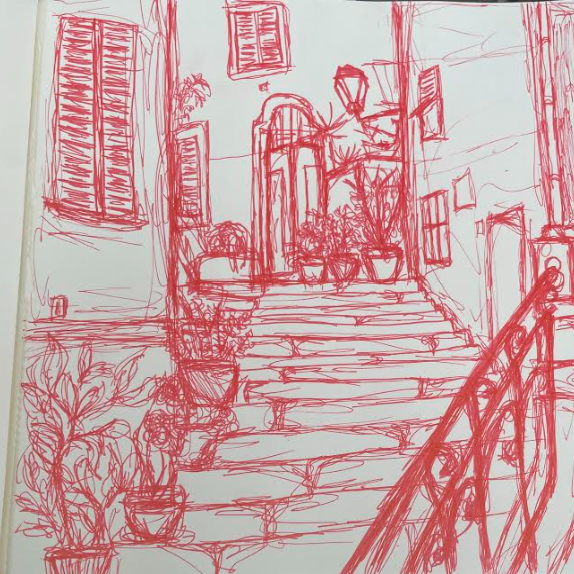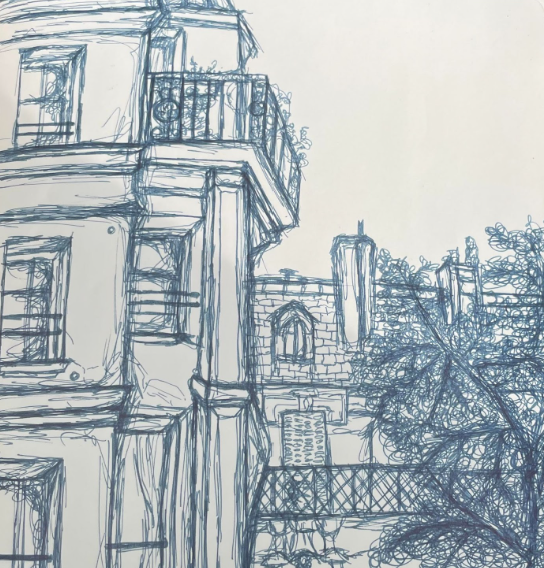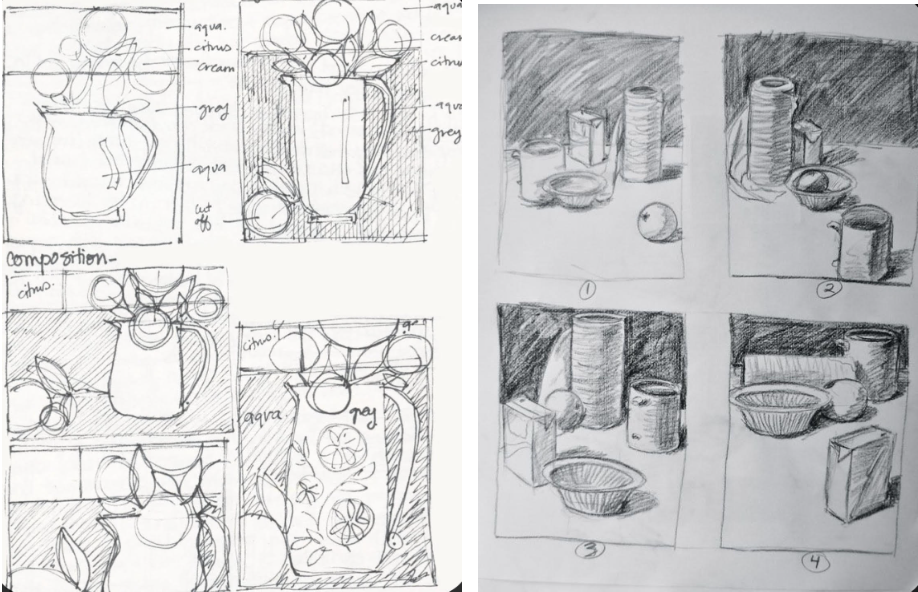5 Tips to Help Improve your Art:
Have you ever struggled with finding ways to continue your art? Here are five ways you can improve your art as a beginner or incorporate it into your daily life. Whether it’s through fun games or traditional methods, there are a wide variety of ways to develop your skills, even if you’re in an art block or are struggling to practice more. I’ve listed five tips that have personally helped me (and others) continue to create and improve their craft.
1. Always have a sketchbook on hand:
Whether on the train station, walking the streets of your neighborhood, or simply sitting down with friends, carrying around a sketchbook gives you the opportunity to always have creative freedom. You never know when you may see something that strikes inspiration or when you may have time to draw a small doodle. Some of my best works have come from spontaneous outings, where I never planned to have drawn something in the first place.


Carrying a sketchbook also gives more opportunity for observational sketches. Observational sketches are when you simply draw what you see in front of you in real life. This technique is one of the quickest ways to improve and is essential to being a structured artist. “First you draw what you see. Next you draw what you know, and only then will you know what it is you see.” – Robert Beverley Hale
Linked below is an article further explaining observational drawings:
2. Work from references:
One of the hardest parts of drawing is accuracy, be it anatomy, landscapes, or facial expressions. It can be a lot easier to have a reference to work from and there are a few places to find them, especially when drawing people. It can be hard to constantly come up with things to draw from your imagination, so Pinterest, Instagram, and YouTube all are good sources to find things to practice drawing.
Pinterest has helped me countless times in the past, with both specific references or just simply inspiration. There are thousands of photos to choose from, like photographs that work as references for a drawing or as an entire drawing itself. By searching in the top bar for whatever pose you need, a multitude of options appear. Just scrolling through the app can help with inspiration for art styles or tips.
While Pinterest has a lot of options, if you’re going for a more specific pose or angle, the simplest option can be to take a photo yourself or to ask a friend to help you out.
3. Expand your creativity:
One of my favorite games to play with friends or family is the hand-off drawing game. It’s a simple activity that pushes your creativity through the mind of another. One person starts off with a simple doodle, like a line or a shape, and switches off for the other person to continue the drawing. This goes on until there is a complete drawing on the paper. It’s a fun activity that can come out with weird or funky results, as well as helping to expand your creative mindset. Another way to switch up what you normally draw is to have someone else mix up the different elements for you. Using either the Wheel of Names | Random name picker, a generator online, or even blindly drawing something you picked randomly out of a hat, you can determine which medium you should work with, the subject of your drawing, or what color scheme to use. This gives so many different options on where your art piece could go, or how it could vary from your previous works.
4. Plan with thumbnails before you start:
Sometimes it can be nice to just start drawing with no expectation of where it’s going to go, but other times it can be beneficial to start with thumbnails. Thumbnails are tiny drafts that many artists use as they vary the layout of the drawing. When working with color or composition, it comes in handy to outline a few ideas before you start. So, thumbnails give you a few options to be able to play around with and see what you’re happy with before starting. If you have a specific idea in mind, thumbnails bring them to life while allowing the chance for mistakes.

5. Draw every day:
Although it can seem like a daunting task, drawing every day helps improve your art skills immensely. It’s often a common misconception that artists think they have to draw for long extended periods of time to improve, and while this may help, it is also effective to simply just do a rough sketch or a small doodle. It’s important to not focus too much on solely improving and take mental breaks for yourself, while enjoying the act of drawing itself. Watch this before you start drawing every day!
As a beginner artist, it’s not always easy to stick with art or to find new ways to improve, but by using a few of these tips, hopefully inspiration will strike, or you’ll have an idea of where to start. There are so many other good articles and tips that I encourage you to research further. With apps for references, a sketchbook handy, and strategies to try, all you need to do is pick up the pencil and see where it takes you.










